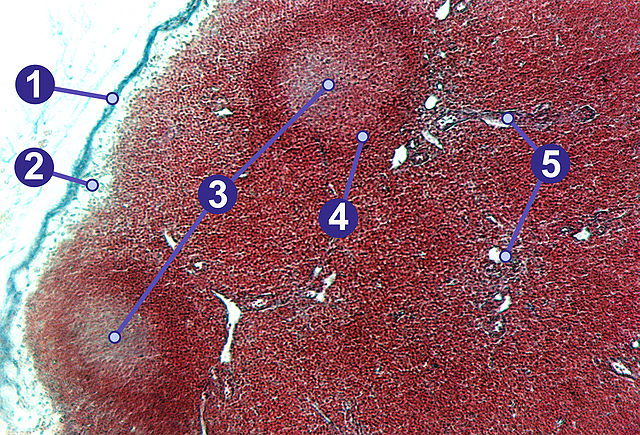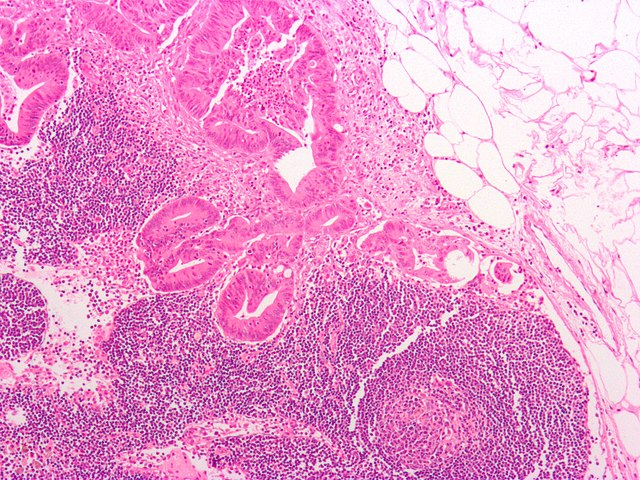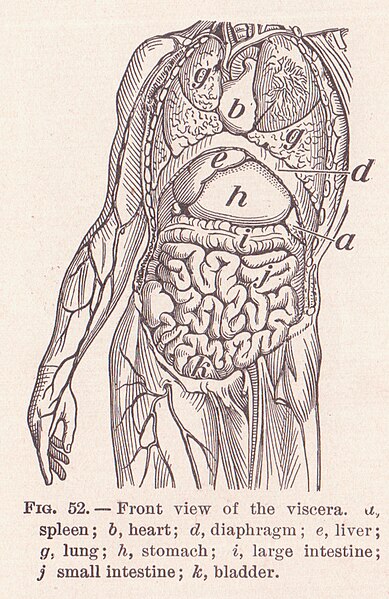A lymph node, or lymph gland, is a kidney-shaped organ of the lymphatic system and the adaptive immune system. A large number of lymph nodes are linked throughout the body by the lymphatic vessels. They are major sites of lymphocytes that include B and T cells. Lymph nodes are important for the proper functioning of the immune system, acting as filters for foreign particles including cancer cells, but have no detoxification function.
Cross-section of a lymph node with sections labelled.1) Capsule; 2) Subcapsular sinus; 3) Germinal centre; 4) Lymphoid nodule; 5) Trabeculae
Labeled diagram of human lymph node showing the flow of lymph
A still image from a 3D medical animation showing enlarged lymph nodes
Micrograph of a mesenteric lymph node with adenocarcinoma
In a multicellular organism, an organ is a collection of tissues joined in a structural unit to serve a common function. In the hierarchy of life, an organ lies between tissue and an organ system. Tissues are formed from same type cells to act together in a function. Tissues of different types combine to form an organ which has a specific function. The intestinal wall for example is formed by epithelial tissue and smooth muscle tissue. Two or more organs working together in the execution of a specific body function form an organ system, also called a biological system or body system.
The liver and gallbladder of a sheep
Relationship of major animal lineages with indication of how long ago these animals shared a common ancestor. On the left, important organs are shown, which allows us to determine how long ago these may have evolved.
Strobilus of Equisetum telmateia
Human viscera








